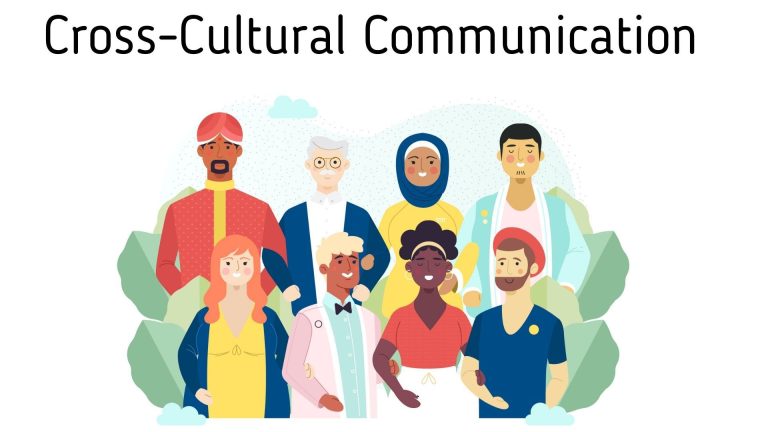Cross-Cultural Communication Challenges in a Globalized Society
As the world becomes increasingly globalized, the need for effective cross-cultural communication increases. Having the ability to communicate across cultural boundaries is vital to team productivity and growth.
Learning about a culture, its values, and beliefs is key to communicating effectively with people from different cultures. Cultivating empathy is also critical to overcoming obstacles to communication between cultures.
Cultural Misunderstandings
Cultural misunderstandings are one of the biggest challenges in cross-cultural communication. People from different cultures perceive and interpret the world in very different ways, which can lead to misunderstandings and conflicts when communication styles clash. This includes differences in communication methods, decision-making processes, and attitudes toward authority. It’s important to understand these differences and adapt your communication style when working with members of a global team.
Non-verbal cues also vary between cultures. For example, eye contact is a sign of respect and attentiveness in some cultures but can be perceived as confrontational or disrespectful in others. It’s important to be aware of these differences and avoid making assumptions about what a person means by their body language or other non-verbal responses.
Similarly, stereotypes and prejudices can interfere with effective cross-cultural communication. For example, a generalized belief that certain groups are less intelligent or prone to violence may cause you to discount the opinions of people from those groups. Likewise, ethnocentrism – the belief that your own culture is superior to other cultures – can lead to misunderstandings and misinterpretations of what might be normal or expected behavior in other countries.
Language Barriers
Language barriers are one of the most common obstacles to effective communication. They can occur when two people speak different languages or even when they use the same language but with differing accents, dialects and slang. These barriers can cause misunderstandings and confusion.
When communicating with people from a different culture, try to use simple words and phrases. It is also helpful to avoid idioms and slang. It is important to ask for clarification if you are not sure what the other person means. This will help to prevent misunderstandings and clarify the message that is being conveyed.
It is also helpful to avoid assuming that you know what another person means by their body language. For example, a gesture that might be interpreted as a sign of receptivity in your culture could be interpreted as aggression by someone from a different culture.
In order to communicate effectively with people from different cultures it is important to build relationships and show that you care about them. This will encourage them to trust and respect you. Developing these relationships will also allow you to understand the values and beliefs that they hold. This can improve your ability to work with people from other cultures in the workplace.
Nonverbal Communication Differences
Non-verbal communication is an important aspect of human interaction. Gestures, body language and facial expressions all send messages that vary across cultures. Understanding the nuances of non-verbal communication can enhance intercultural interactions and reduce misunderstandings. Examples of these nuances include cultural interpretations of the meaning of eye contact, hand gestures, the tone and speed of the voice and the use of space.
For example, direct eye contact is a common form of communication in Western culture and symbolizes attentiveness and confidence. However, in some Eastern cultures, prolonged eye contact can be perceived as aggressive or disrespectful. Additionally, different cultures have varying expectations for the amount of verbal communication in an interaction. These differences can cause misunderstandings, as some people may believe that a long speech or monologue is a sign of interest, while others may find it offensive.
Different cultures also have different perceptions of time. Some cultures view time as linear and place importance on punctuality, while others prioritize relationships and flexibility over adherence to strict schedules. Understanding these differences can help individuals bridge cultural gaps in business negotiations and in other professional settings.
Ethical Dilemmas
The globalization of business creates new ethical issues that companies must deal with. These issues are difficult to solve because they involve people who maintain different moral foundations and have different obligations in a specific situation. These issues can include avoiding tax evasion, refusing to support questionable accounting practices and refusing gifts from vendors in exchange for better treatment of employees. Having a clear understanding of your company’s values and morals can help you be prepared to handle these ethical dilemmas in the future.
Ethical issues can also arise when a corporation operates in a country with different laws and standards of conduct. This can be the case with labor and environmental standards or when a company operates in a country that has a history of corruption. It is important to understand the different norms and cultures of a country to be able to navigate these situations effectively.
In the field of international business ethics, academics have developed a range of answers to these dilemmas. Among these are frameworks for dealing with corporate social responsibility that address the relational nature of corporations to global publics, including customers, investors and suppliers. These frameworks typically adopt a global normative framework that can accommodate a variety of practices and incorporates elements of libertarianism, utilitarianism, Kantian deontology and virtue ethics.
Power Dynamics
Despite the fact that people from different cultures may share the same language, communication differences can still hinder relationships and business progress. Some of these barriers include cultural values, attitudes and beliefs. For instance, in some cultures, direct communication is appreciated, while in others, indirect or diplomatic communication styles are preferred. Moreover, some cultures have different expectations for the expression of emotions. According to Dale Leathers, facial expressions communicate ten basic classes of meaning. Lastly, cultural differences in a person’s sense of personal space also affects communication.
Understanding the role of power in a culture is essential for cross-cultural communication. A culture’s power dynamics determine the economic, political and social opportunities available to individuals or groups of people. Societal power imbalances can lead to oppressive structures that marginalize certain communities, especially those based on race, gender or sexual orientation.
As globalization continues to accelerate, the ability to effectively communicate with people from diverse backgrounds and cultures becomes increasingly important in the workplace. This requires the development of cultural sensitivity, which can be achieved by training employees to appreciate different cultural norms and communication styles. In addition, it is crucial to avoid making assumptions about a person’s culture or customs and to be open-minded and respectful in all interactions.

Technology and Communication
Globalization and informatization have a direct impact on communication across cultural borders. These twin forces have precipitated changes in the conception of culture and the ways in which it affects individual identity. They also impact the way in which cultures change, and whether they do so to converge or diverge. Intercultural communication scholars are in a unique position to address these issues.
For example, the Internet and other technology have facilitated an unprecedented level of worldwide connection among people. It is easier than ever for individuals to communicate with those outside their immediate circle of friends or co-workers. This has led to increased cultural exchanges, and it may have contributed to the rise of new types of art. However, globalization has also caused some concern over the endangerment of local cultures. Ethnocentrism, the tendency for individuals to view their own culture as an in-group and others’ cultures as an out-group, can be a major obstacle in cross-cultural communication.
In addition, globalization has heightened awareness of political and economic issues that transcend national boundaries. For example, the Dalai Lama has nearly as large a following among Westerners as he does in Dharamsala. This has helped to create a sense of common humanity and has contributed to a global consciousness that is likely to change the nature of communications between nations.
Globalization’s Impact
As globalization continues, communication with people from different linguistic and cultural backgrounds is increasingly important. In a business environment, this can mean communicating with coworkers who have a wide variety of traditions and ways of communicating. It can also mean navigating differences in values and beliefs. Many of these differences lead to misunderstandings that can impact teamwork and productivity.
The challenges of cross-cultural communication are real, but they can be overcome with a bit of research and awareness. By identifying the distinct cultural differences, leaders can develop tactics for communicating more effectively with diverse team members.
For example, in some cultures, eye contact is a sign of confidence and interest in a conversation, while in others it’s a sign of disrespect. A manager who is aware of these differences can adjust his approach during a business discussion.



